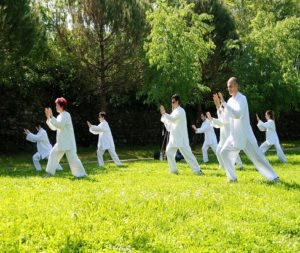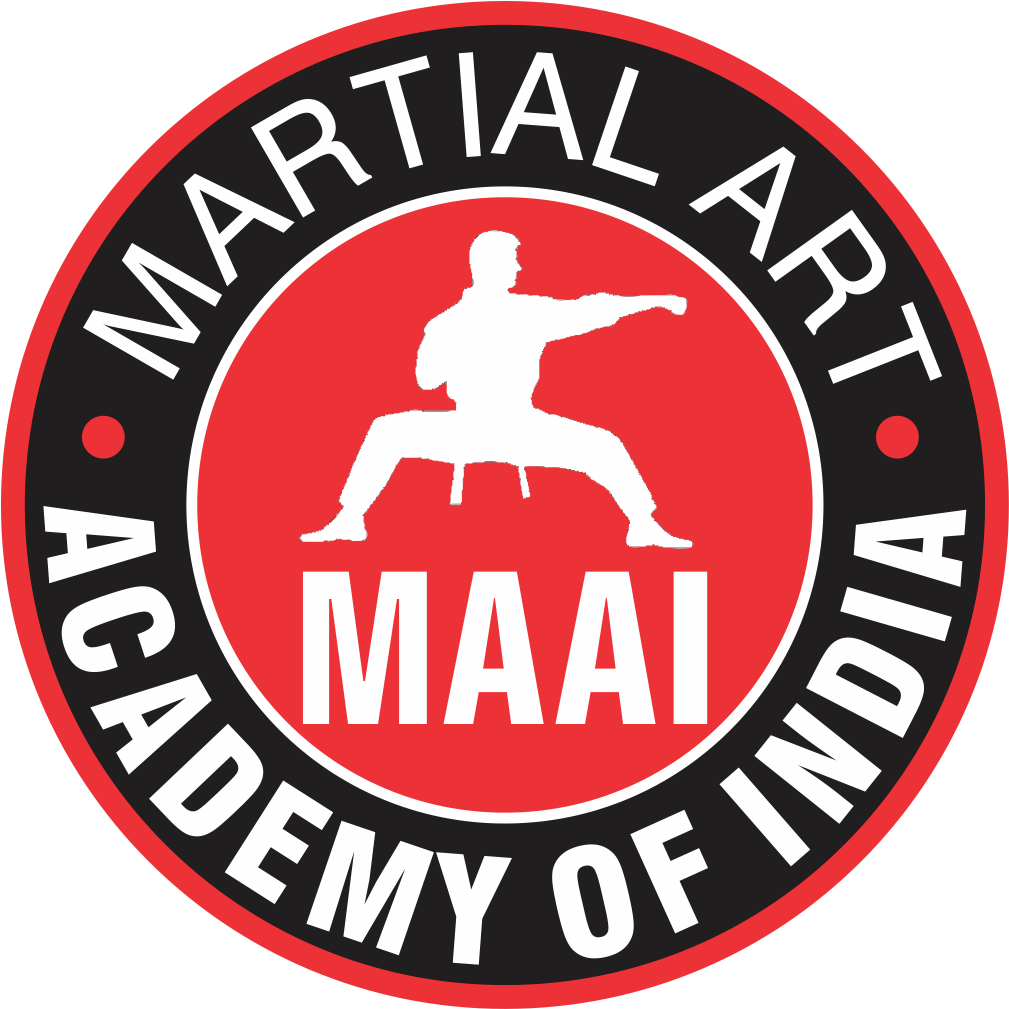 1. The Head is naturally suspended from the Crown
Point (Crown Chakra for Yoga Practitioners). Feel
as if you are being magically lifted by an
invisible strand of silk from Heaven. This allows
for a feeling of openness and looseness in the
spine making the spine extremely flexible. It also
helps to imagine space between each of the
vertebrae. The combination of the feeling of
suspension and the spaciousness spine assists in
correct postural alignment.
1. The Head is naturally suspended from the Crown
Point (Crown Chakra for Yoga Practitioners). Feel
as if you are being magically lifted by an
invisible strand of silk from Heaven. This allows
for a feeling of openness and looseness in the
spine making the spine extremely flexible. It also
helps to imagine space between each of the
vertebrae. The combination of the feeling of
suspension and the spaciousness spine assists in
correct postural alignment.
2. Keep the Chest relaxed while slightly stretching up the back. Slightly hollow the chest, this allows the breath to sink to the lower Dantian. If you protrude the chest the body can become “top heavy” and easy to topple over. Slightly Stretching up the back can help the energy move up the back. Keep the Chest relaxed and hollow out the chest is often confused with collapsing the chest in an over exaggerated fashion causing improper alignment. The correct method should begin with the head suspended from the Bui Hui point and then actually feeling as if the chest were plucked up from the sternum area, then consciously imagine the shoulder blades melting down the spine and you will bring yourself into a state of balance, counter- balance which is really the correct way to “hollow out” the chest with out collapsing the chest. This part of the Classic Ten Tai Chi Principle from Yang Ch’eng-fu is the principle that is most often misinterpreted leading to countless errors in postural alignment and integrity.
3. Relax the Waist, the waist is like the flywheel, or the steering wheel for the energy coming through the body. The classics tell us if the waist is relaxed then the feet will have power and our foundation will be stable. If the waist is not relaxed, but is rigid then the waist will be too slow and cumbersome to direct the energy quickly and directly. In Chinese terms the waist area also includes the area of the hips.
4. Differentiate between Substantial and Insubstantial You must clearly differentiate between the leg that is empty of weight and the leg that is the supporting leg. It is important to be able to load up one leg from the other in an easy and smooth transition of weight. This can be done quickly or slowly, but be careful of being caught with the weight even distributed between the two legs, this creates slowness and cumbersome movement translating into a loss of speed and agility.
5. Relax the Shoulders and Sink the Elbows The shoulder must always be relaxed and this is one of the most difficult things for most beginning tai chi practitioners to do. We are often unaware of the unconsciousness tension we carry in the shoulders, practicing tai chi is a great way to become aware of this tension so that we can eventually through awareness begin to let it go. If the shoulders are tense then the lever for the delivery of force will stop at the shoulder. That is why in tai chi it is so important to relax the shoulder. If the elbows rise up it creates tension in the shoulder, so one must learn to sink the elbows.
6. Use the Mind not Strength, let the Yi lead the Chi. Or letting the mind lead the energy. Even though Tai Chi Chuan is a highly effective martial art, the power comes from the mind and not from the muscle. This is a most difficult concept for most martial artist to grasp. How can you have an effective fighting art without using muscular strength? In tai chi the body becomes very pliable like a whip and the force is directed though the body by the mind. So in this art the mind is most powerful as well as having a body that is free from tension. Tension in the body is like having a kink in a hose. The energy will stop wherever there is a kink, just like a kink in a hose stops the water from coming through in full force, only a dribble comes out. It is exactly the same concept in tai chi. Wemustquietthemindsothatwecanusethemindtodirectthechi. Adisturbedor distracted mind cannot do this. This is one reason why the practice of tai chi has become to be know as a “moving meditation”, because of the mindfulness involved in the practice of tai chi.
7. Unity of the Upper Body and Lower Body, the upper body and lower body must interact together in constant connection. Kinesthetically we refer to this as successive contraction, or like flicking dominos to make them fall consecutively. Movement begins in the feet with a sense of being rooted from below the earth, then bringing that ground strength up through the legs, it is commanded or directed by the waist and if there in no obstruction in the shoulders then the energy is issued through the hands. Actually accomplished tai chi masters can issue the energy from anywhere on their body. The eyes are important in the direction of energy. The body must be relaxed so that the energy can travel through the body. The mind directs the flow of energy.
8. The Unity of Internal and External, in tai chi it is important that the mind, the body and the breath come into single focus. The mind is the spirit and the commander of the body. The body follows the mind responding effortlessly and without interruption. This comes with concentration and single-minded practice. When the body and the mind are one and there is no division between what the mind directs and the instantaneous response in the body. It is effortlessness in its highest form.
9. Continuity without Interruption, unlike the external styles of martial arts where there is a beginning and an end point, the practice of tai chi is more fluid, in fact sometimes described as moving like a great river. Once we separate from wu chi we are in a constant flux of motion alternating between yin and yang. Following the same principles that keeps the universe pulsing with the cosmic energies of polar opposites. The art of tai chi based on taoism, becomes an art that helps us understand the very laws of nature in our own beings.
10. Seeking Stillness in Movement, even in movement there is a sense of stillness. When practicing tai chi there is always a state of tranquility in the mind, like the eye in the center of a hurricane. From this serene perspective it is easier to focus the attention completely aware and open. When completely open and aware the chi can sink into the lower dantain.









